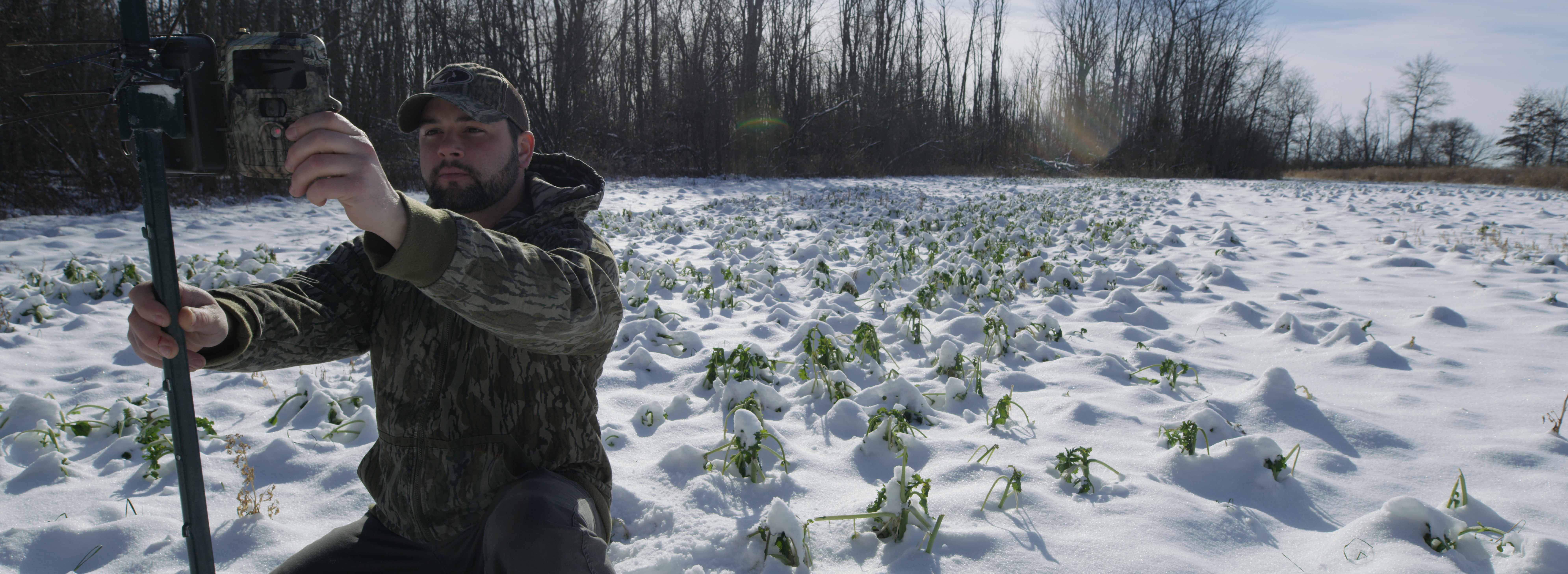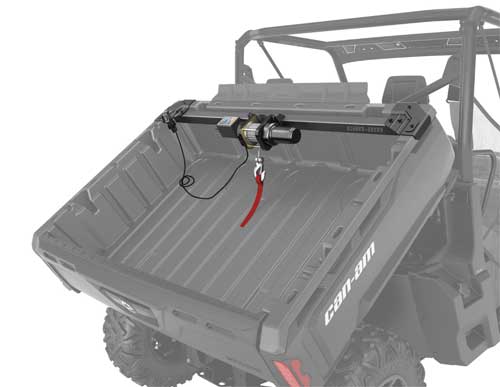By Jake Meyer
The most anticipated phases of deer season have come and gone and many hunters have unwillingly found themselves with nothing but “tag soup” in their freezers. Don’t quit yet! With plenty of time left in most states and cold weather on the way, the pieces could be falling into place to experience the best deer movement yet. Make the following steps part of your game plan to salvage your season and fill a late-season buck tag.
Reposition Your Trail Cameras
As with any phase of deer season, it is important to have multiple sets of “eyes” in your woods watching for you 24/7, letting you know where your deer are/aren’t moving. During peak rutting activity, you may have found yourself running a blitzkrieg on ground scrapes with your trail cameras. While a well-used ground scrape should still remain close to the top of your “Places to Hang Camera” list, it is important to bear in mind one of the top driving forces for overall deer behavior during late season: FOOD (See Find the Food below).
Be ready to hone in on a specific deer as soon as he moves into your area and/or reveals that he is moving during daylight, based off of your pictures. Put together your game plan by reviewing information acquired from current and historic pictures. When reviewing historic pictures, pay close attention to the information that would best answer the following questions.
During late season:
- Historically, where have I captured the most pictures?
- Where have I captured daylight pictures of (insert “mature” if that’s your goal) deer?
- Do the deer I hunt move through the property more in the mornings or evenings? Why?
- What is the best food source available for the deer I hunt? (grain, green, mast crop, etc.)

Find the Food, Find the Deer
To place the odds in your favor, you have to hunt where the deer are. Deer herds across most parts of the country have just spent most of their time breeding and avoiding hunters during peak hunting pressure. These activities are both taxing on the energy and health of deer. They don’t have a choice but to replenish their bodies with some much-needed food. During late season, food is the primary factor influencing deer behavior with the exception of the potential of a final flare of rutting behavior (“second rut”). This occurs when non-pregnant does are coming back into heat, or a doe fawn has reached sexual maturity.
A receptive fawn can be the greatest thing that may ever happen to your season. They are the most likely of any deer to make a major mistake during daylight and make the wisest buck in the woods appear foolish, given the places and times they could be seen chasing. While it is a possibility, don’t plan your entire season on this event. According to Quality Deer Management Association Whitetail Report 2017, Southern fawns have to reach at least 70 pounds while northern fawns be at least 80 pounds to reach sexual maturity. If a fawn does develop enough to reach estrous, it will usually occur about 1-2 months after mature does enter estrous. Doe fawn breeding rates vary widely across states. Less than one percent of doe fawns breed in Maryland and New Mexico, while 43% of them breed in parts of South Dakota. Nationwide, about 13% of doe fawns breed with the highest percentage coming from the Midwest (16%), followed by the Southeast (13%) and Northeast (10%).

late-season cold front to tag out on these giant Iowa bucks.
Don’t Miss Big Cold Fronts
Weather plays one of the biggest roles in forcing deer to move, especially during late season. In addition, according to Kip Adams, Director of Conservation for QDMA, bucks can lose 20-25% of their total body weight during the rut. This fact means that after peak breeding activity, bucks are in a biological state where it is imperative that they recuperate that lost weight to prepare for winter. The colder and harsher the conditions, the more frequent deer will have to eat. Typically, the colder the temperature, the better the movement.
Pay close attention to the extended forecast and watch for any sudden swings where the temperatures rapidly decrease (10+ degrees). When temperatures start to fall and the local meteorologist says statements like “colder than normal,” “below average” or “arctic chill,” get to a stand/blind over your best food source and stay put. Typically, the lower the temperatures, the earlier in the afternoon/evening the deer should move.
Mind Your Access
Late season can offer some of the best sits of the year as it relates to seeing ample amounts of deer. If the property you hunt has their preferred food source and the right cold front creates an even higher demand for that food source, you could have the hunt of a lifetime. However, one major factor could ruin this: human pressure. Nothing will drive the deer you hunt away or make them go completely nocturnal faster than them knowing they are being hunted. By this time of the year, most of the leaves have fallen and the woods are wide open. That’s why it is critical to pay close attention to your entrance/exit strategies. If you find yourself sitting on the preferred food source, it is highly likely that you will be stuck in your stand with several deer around you. To preserve your spot and property for future sits during the remainder of the season, follow these tips:
1. During your entrance and exit, go to the furthest extent to make sure the deer can’t see or smell you. Use tall grasses and other natural or man-made barriers to avoid being seen and smelled. (This is critical!)
2. When hunting right on the food source, have a plan of how to clear the field to escape undetected.
- Have a buddy drive a truck or tractor to clear the field, when possible. Across the country, deer have a reasonable tolerance to trucks and tractors. These vehicles will push deer off the field and they will return shortly after the vehicle has left the area.
- Bring a coyote howler or hoot owl call and blow it right when legal light ends. Deer are much more tolerant to these predators than they are humans. Try not to wait until it gets too dark, though, as the deer become more comfortable with being in the field the darker it gets. Seeing a coyote may send them to the next wood lot. Seeing/smelling a human may send them to the next county (not literally, but you get my point).
- Shoot a doe at last legal light. The shot should clear the field, but they won’t know the source of the noise. Recover her quietly and as quickly as your shot placement will allow you, then get out!
I have had some of the best sits of my life during late season. While it may not be the most popular time for the majority of hunters to hunt (usually due to burn out), it can be highly rewarding. Stick with it and go fill your tag.































